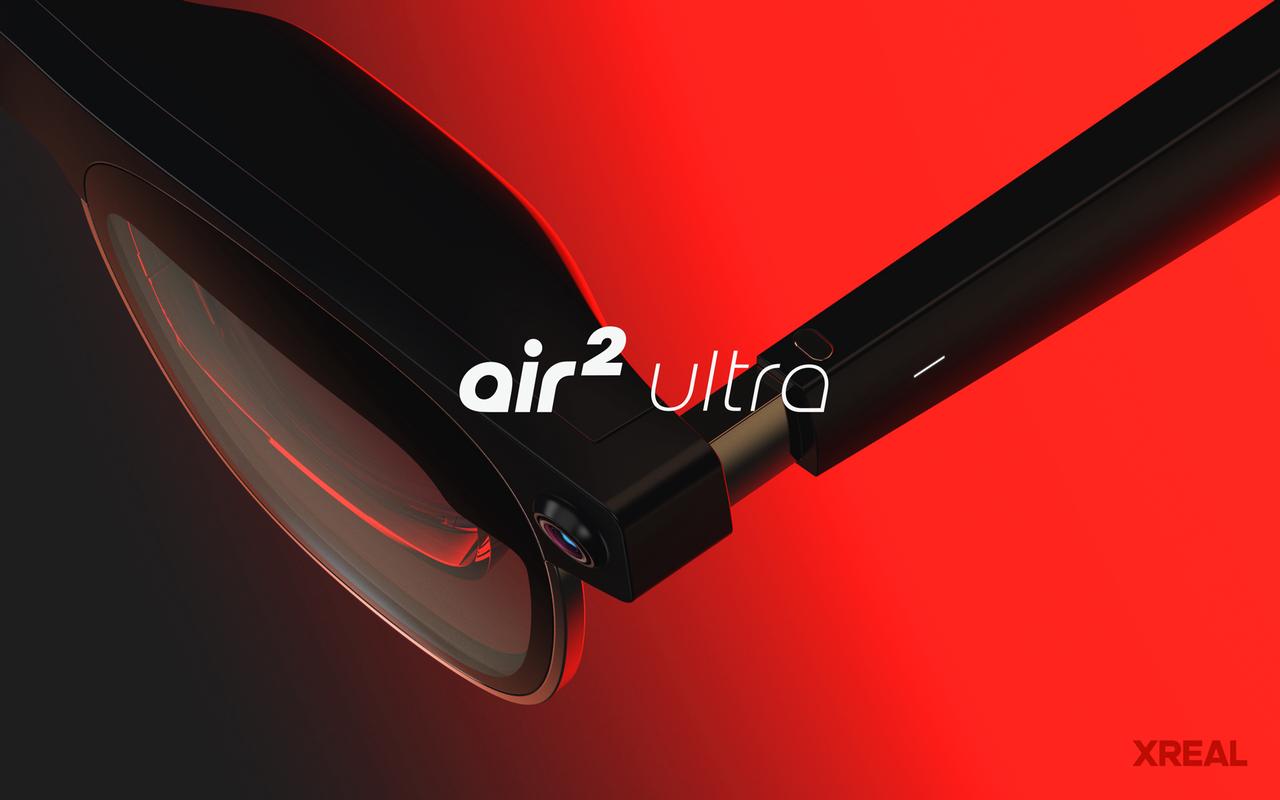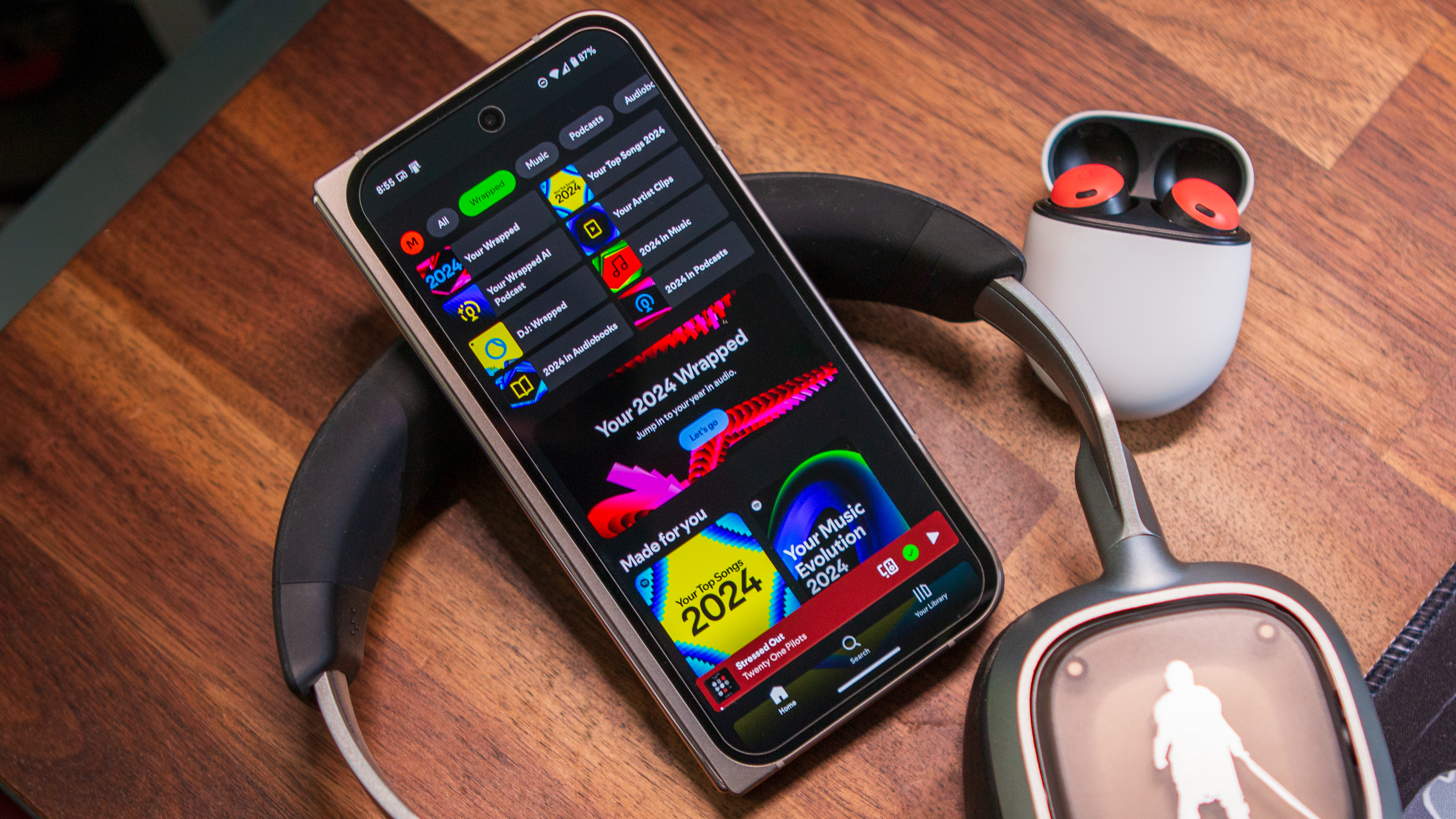XREAL wants to undercut the Apple Vision Pro with its 'Ultra' AR glasses
Designed to display Apple's spatial videos at a higher PPD than Vision Pro, the XREAL Air 2 Ultra has us excited for AR glasses' future.

What you need to know
- The XREAL Air 2 Ultra was announced at CES 2024 and ships in March 2024 for $699.
- Designed for developers, it adds 3D environment sensors for the first time, supporting handtracking and 3D mesh creation.
- It sports full HD resolution per eye, 120Hz refresh rate, and a 52º FOV, with a higher PPD score than the Apple Vision Pro.
- The glasses weigh 80g, heavier than standard glasses but significantly lighter than your typical mixed-reality headset.
XREAL plans to launch a new, high-end pair of augmented reality glasses this March, targeted at developers. With the Apple Vision Pro set to launch first and grab all the headlines, XREAL is marketing its Air 2 Ultra glasses as the affordable, hand-tracking featherweight to Apple's $3,500 heavyweight.
Like the XREAL Air 2 launched late last year, the Air 2 Ultra has a traditional glasses form factor instead of the massive mixed-reality headset design of the Vision Pro and Meta Quest 3.
That limits the possible field of view (FoV) to 52º, about half what a traditional MR headset can deliver. But XREAL notes that the actual pixels per degree (PPD) is 42, well above the Quest 3 (25) and "expected to be higher than Apple Vision Pro" despite its 23 million pixels.
You're still getting a dense virtual display in your vision, in other words, without a pound of weight on your head and neck. At 80g, the XREAL Air 2 Ultra is about 30g heavier than Meta Ray-Ban smart glasses — due to all of the spatial computing tech packed inside. But for developers who need an all-day work device, a 2.8oz pair of glasses sounds feather-light in lieu of to a one-pound MR headset.

Compared to the $399 Air 2, the $699 Air 2 Ultra has the same 500 nits of brightness, 120Hz refresh rate, and FHD resolution. The key spec difference is the extra 6 degrees of FoV, enough to deliver a 154-inch virtual display for a movie theater-level streaming experience.
The bigger difference is, of course, the new 3D environment sensors catered to developers. The glasses can "provide simultaneous location and mapping" of your environment, along with "hand-tracking, 3D mesh creation, semantic scene understanding," and vague "future AI capabilities."
Running off of Unity and XREAL's own SDK, the Air 2 Ultra is meant to help developers build AR experiences and 3D versions of 2D apps, then test them using their hand-tracking capabilities. The glasses can sync with Android, iOS, Windows, and Mac.
Get the latest news from Android Central, your trusted companion in the world of Android
The glasses also support the new spatial video format from the iPhone 15 Pro, meaning you can film them with your phone and then watch them on the Air 2 Ultra "without the need for an expensive Apple Vision Pro."
The XREAL Air 2 Ultra launches in March 2024 for $699, which sounds expensive until you put Apple's $3,500 price tag next to it for context. That's why we're not surprised XREAL chose to pick a fight with Apple in its press release.
Overall, the Air 2 Ultra has us excited, even if it's overkill for non-developers like us. The fact that XREAL managed to pack hand-tracking tech into this portable form factor gives us hope that smart glasses will continue to evolve beyond their current limitations.

Michael is Android Central's resident expert on wearables and fitness. Before joining Android Central, he freelanced for years at Techradar, Wareable, Windows Central, and Digital Trends. Channeling his love of running, he established himself as an expert on fitness watches, testing and reviewing models from Garmin, Fitbit, Samsung, Apple, COROS, Polar, Amazfit, Suunto, and more.
